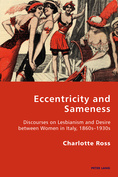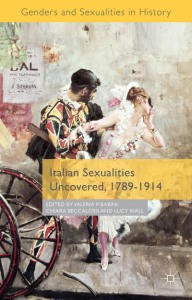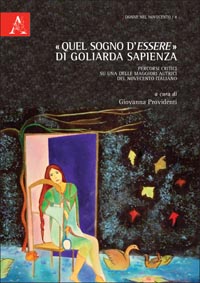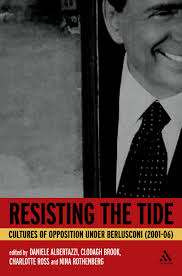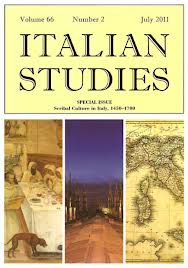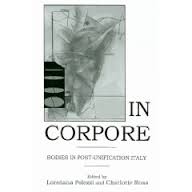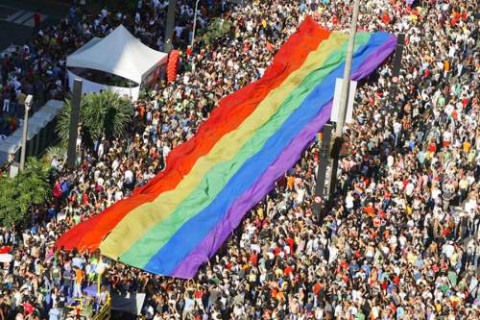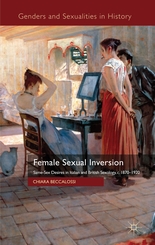Incontro al Centro documentazione il Cassero, 18 aprile 2013
La letteratura ‘lesbica’ italiana oggi
Charlotte Ross, Università di Birmingham.
L’incontro fa parte del programma di SOGGETTIVA (rassegna di cultura lesbica di Arcilesbica Bologna)
Riporto il testo del mio intervento, che è stato seguito da un vivace dibattito. Ringrazio Arcilesbica Bologna per avermi accolta nel programma di SOGGETTIVA, e tutt* che hanno partecipato all’incontro. È stata un momento molto ricco e stimolante. Se hai dei commenti/riflessioni da condividere, puoi lasciare la tua opinione nella sezione “feedback” del blog, o mandarmi una mail: c.e.ross@bham.ac.uk. Se vuoi scaricare questo intervento, clicca qui per la versione PDF: Incontro al Cassero sulla letteratura lesbica italiana oggi
Le riflessioni che seguono emergono dal mio progetto di ricerca sulla rappresentazione culturale del desiderio tra donne e dei lesbismi in Italia. Parto dal 1870 ed arrivo al tempo presente. Attualmente sto scrivendo una monografia che si focalizza sul periodo dal 1870 alla fine degli anni ‘30 del ‘900. Lo scopo del mio studio è di identificare la varietà dei modi in cui si raccontava e si rappresentava il desiderio tra donne in Italia durante quel periodo. Perciò sto prendendo in considerazione diversi generi testuali che vanno dagli studi bio-medici degli scienziati positivisti a testi giornalistici, recensioni, articoli politici, scritti femministi, discorsi legali ed etici sulle cosidette ‘oscenità’, ed anche testi letterari—romanzi, poesie, racconti. Sto inoltre considerando i vari generi letterari, dai romanzi di Matilde Serao e Sibilla Aleramo, che hanno un chiaro valore artistico, ai romanzi pornografici ed erotici di scarsa qualità letteraria, che spesso assumono una prospettiva voyeuristica o oggettivizzante.
Vi dico tutto questo per spiegare il mio approccio all’argomento: sto analizzando la varietà di discorsi sul desiderio tra donne, sia negativi che positivi. Secondo le teorie del filosofo Michel Foucault, che hanno poi influenzato il pensiero della filosofa femminista Judith Butler, le nostre identità di genere e sessuali si costruiscono attraverso una molteplicità di discorsi socio-culturali che ci circondano, che circolano intorno a noi. Sono discorsi che ci formano in maniera normativa, ma dai quali ci possiamo anche distinguere ed allontanare, sviluppando discorsi alternativi di genere e di sessualità, ad esempio. Le categorie ‘lesbica’, e ‘letteratura lesbica’, sono delle categorie socio-culturali e storiche, in via di sviluppo costante. Sono categorie che hanno, e che devono avere, significazioni molteplici a seconda di come, e da chi, vengono usate. Sono categorie che si evolvono e si costruiscono in un contesto discorsivo variegato ed instabile.Quindi, per capire i discorsi positivi sul desiderio tra donne, occorre studiare anche quelli negativi, e cercare di capire le tensioni che presiedono entrambi i discorsi. Occorre inoltre prestare attenzione a come i discorsi positivi riprendono e modìficano quelli più negativi, rovesciandoli, appropriandoli, rielaborandoli, al fine di creare dei linguaggi nuovi. Pertanto io non vado alla ricerca della ‘letteratura lesbica’: invece ciò che cerco sono dei testi che parlano di lesbismo e di desiderio tra donne in qualsiasi modo.
Concordo con studiose/i che ritengono che i concetti stessi di ‘lesbismo’, e di ‘lesbica’ siano impossibili da definire, e dovrebbero continuare ad esserlo, altrimenti ci troviamo limitate e circoscritte da una o piu’ categorie che finiscono per irrigidire le nostre identita’ in modo essenzialista. Ma, in determinati momenti e contesti storici, poter insistere sulla validità di una categoria identitaria riconoscibile è fondamentale. Diventa una forma di essenzialismo strategico, che dà visibilità a gruppi marginalizzati, rende dicibile ciò che è tabù, rafforza un senso di comunità (anche se immaginaria), di appartenenza (anche se transitoria), e, infine e crucialmente, esige un riconoscimento dalla società e dalla cultura dominanti.
E questo è uno dei motivi per cui ho scelto di parlare della letteratura lesbica italiana; per capire se parlare e pensare a questa categoria letteraria possa impattare sulla visibilità e dicibilità del desiderio tra donne e delle identità lesbiche in Italia oggi.
Prima di passare ai testi, vi fornirò qualche definizione.
Prima di tutto, cosa intendiamo per romanzo lesbico? Secondo la studiosa Marilyn Farwell (1996), nella narrativa lesbica, la trama tradizionale eteronormativa, in cui l’eroe supera varie sfide per poi sposare la fanciulla, viene sconvolta dalla presenza di un desiderio omoerotico. Questo desiderio dirompente porta a una ridefinizione della struttura del romanzo—una ridefinizione che dedica spazio allo sviluppo di una soggettività lesbica. Le narrative lesbiche possono anche finire in maniera tragica—ma, in modo significativo, dopo aver sconvolto l’ordine eteronormativo, sia dell’immaginario culturale sia della struttura narrativa tradizionale.
Questà e una definizione che si focalizza sul testo, non sull’autore; ed è una definizione fortemente politica, anche se non richiede un esito specifico.
Altre studiose si sono focalizzate invece sulle tematiche narrative, proponendo varie categorie di letteratura lesbica; ad esempio nell’analisi di Lilian Faderman (1994) la letteratura lesbica può essere divisa in sei filoni: l’amicizia romantica, l’inversione sessuale, le lesbiche esotiche ed erotiche; le lesbiche nascoste, che scopri solo leggendo tra le righe; le amazzoni femministe, il femminismo post-lesbico.
Ovviamente, Faderman sta parlando della letteratura lesbica angloamericana. Un approccio possibile al fenomeno della letteratura lesbica in Italia sarebbe vedere, come ha iniziato a fare Margherita Giacobino nel suo studio Orgoglio e privilegio, del 2003, quali testi italiani rientrano in queste categorie. Giacobino conclude che quella che si potrebbe chiamare la letteratura lesbica italiana soffre di ‘una reticenza made in Italy’; lei suggerisce che certi romanzi siano ancora segnati da una paura del lesbismo o da una tendenza a condannare il desiderio lesbico, il quale si sente ancora molto più fortemente nella letteratura italiana che non nella letteratura nord americana, ad esempio.
Queste riflessioni mi portano ad un’altra idea, che vorrei discutere con voi stasera; cioè, l’adeguatezza della rappresentazione letteraria lesbica in Italia. I commenti della Giacobino mi hanno fatto pensare a una riflessione della teorica Teresa de Lauretis, che nel suo studio La pratica d’amore (del 1997) si è lamentata dell’ ‘inadeguatezza’ della rappresentazione culturale del desiderio lesbico. Il commento della de Lauretis si riferisce principalmente alla cultura anglo-americana dominante, ed è stato articolato più di 15 anni fa; le riflessioni della Giacobino risalgono a 10 anni fa, e si riferiscono più strettamente alla letteratura italiana a tematica lesbica. Giacobino non usa la parola ‘inadeguatezza’, ma implica che la rappresentazione culturale dei lesbismi in Italia sia problematica e in qualche modo indietro a quella nord Americana. Cioè, inadeguata.
Se pensiamo alla cultura dominante in Italia—la televisione, i film che sono distribuiti a livello nazionale, i giornali, i libri pubblicati dai grandi editori, mi sembra che, purtroppo, la critica della de Lauretis sia – per molti versi – ancora valida. Da un lato, l’omoerotismo femminile gode di una rappresentazione ampia: su Canale 5, nei balletti tra le veline, o nella pornografia mainstream. Ma si tratta di un’omoerotismo femminile recitato per un presunto spettatore maschile ed eterosessuale. Dall’altro, invece, il soggetto lesbico è ancora poco visibile. Quindi, ciò che prevale nei media italiani è una rappresentazione inadeguata che tende a ridurre le lesbiche o all’invisibilità o alla negazione: visiva, discorsiva, rappresentativa. Se pensiamo alla narrativa lesbica in Italia, una letteratura di nicchia, ovviamente gli ultimi vent’anni hanno visto un aumento considerevole di romanzi e racconti. Anche se i testi non sono sempre facilmente reperibili nelle librerie, si trovano, sono numerosi, e stanno colmando un vuoto discorsivo storico molto nocivo. Mi viene da chiedere, ora che la letteratura italiana a tematica lesbica sta iniziando ad avere una presenza più visibile, quale visione del lesbismo e delle lesbiche ne viene fuori? E, come lettrici, quali sono le nostre aspettative rispetto alla rappresentazione del lesbismo in questi testi? Se siamo soddisfatte della letteratura lesbica in Italia, quali sono le caratteristiche testuali e narrative su cui si basa la nostra approvazione? Se non siamo soddisfatte, invece, perché? In cosa consisterebbe l’ ‘adeguatezza’ di un romanzo a tematica lesbica? Viene dal livello di impegno politico lesbo-femminista del romanzo? Dalla visibilità del testo nel contesto socio-culturale generale? Quale sarebbe il compito di un romanzo lesbico ‘adeguato’? Di raccontare delle storie positive per rallegrare chi vorrebbe rispecchiarsi in un testo che valorizzi l’amore tra donne? Di raccontare onestamente le difficoltà dell’ ‘esistenza lesbica’ in un contesto prevalentemente ostile e omofobo? Di trasportarci oltre la realtà quotidiana grazie alle qualità letterarie e linguistiche dell’opera? Di incoraggiare delle riflessioni critiche sulla società attuale, o sul passato? Di creare una comunità di lettrici lesbiche?
Senza dubbio sto prendendo la riflessione della de Lauretis troppo alla lettera; ma lo faccio con consapevolezza, per provocazione; è una strategia interpretativa che mi permette di chiarire criticamente una prospettiva sulla rappresentazione culturale dei lesbismi.
Nel tempo che mi rimane, vorrei condividere con voi cinque mie osservazioni sulla rappresentazione letteraria del desiderio tra donne in Italia, con riferimento ad alcuni romanzi pubblicati negli ultimi 20 anni. Tengo a precisare che la mia è una ricerca in corso, quindi anche se ho già una bibliografia abbastanza ampia, grazie agli amici Luca e Raffaele della libreria Igor, alle colleghe della biblioteca della donne, e a Sara di Giovanni del Centro documentazione del Cassero, sto sempre alla ricerca di nuovi titoli ed apprezzerei le vostre segnalazioni. Farò delle osservazioni brevi su alcuni testi specifici, su tendenze generali che potremmo identificare, e sulla rilevanza o meno del concetto dell’adeguatezza in merito a questi testi. Farò alcuni riferimenti a romanzi pubblicati in inglese, perchè penso che l’analisi comparata della rappresentazione del desiderio tra donne in contesti culturali diversi sia fondamentale. Inoltre, ritengo che la contaminazione e l’intertestualità interculturali siano degli scambi importanti che vanno studiati. Però non vorrei implicare che la letteratura italiana stia indietro, o che debba adeguarsi ad un modello e ad un percorso già stabiliti nel contesto nord Americano o inglese. Invece vorrei porre altre domande, che puntano sulla specificità della rappresentazione culturale del desiderio tra donne in Italia.
Prima osservazione: il numero di titoli a tematica lesbica pubblicati ogni anno va aumentando. Per questo, c’è una scelta relativamente ampia di generi letterari, dai racconti erotici al romanzo storico. Possiamo trovare esemplari di quasi tutti i filoni nominati da Faderman. Bisogna ammettere che non si tratta di grande letteratura con la ‘L’ maiuscola. Per la maggior parte sono romanzi poco sperimentali, discorsivi, che usano un tono colloquiale. Ma altre ad identificare una varietà di tematiche e di generi letterari, possiamo vedere anche un’evoluzione del modo in cui il lesbismo viene rappresentato in certi generi, e a volte una domesticazione di un approccio narrativo sviluppato inizialmente all’estero. Pensiamo ad esempio al giallo lesbico, una rielaborazione del genere sperimentata negli stati uniti negli anni 70, e poi sviluppata nel Regno Unito, e altrove. Possiamo tracciare un’evoluzione del giallo lesbico italiano: dal desiderio ambiguo fra due donne che si sospettano a vicenda in Complice il dubbio di Maria Rosa Cutrufelli (1992), alla presenza spettrale della detective lesbica Commissaria Adele Sòfia in Voci (1994), e Buio (1999) di Dacia Maraini, al personaggio divertente ma velata di Alice Carta, protagonista di numerosi romanzi di Fiorella Cagnoni, al noir di Sarah Sajetti, Volevo solo un biglietto del tram (2008), che manipola gli elementi del giallo in maniera ironica e consapevole.
Mi sembra che l’adeguatezza della rappresentazione culturale lesbica possa derivare anche dalla varietà di generi testuali che parlano di lesbismo—una varietà che riflette la molteplicità irreducibile del soggetto lesbico. L’adeguatezza può derivare dalle abilità delle autrici o degli autori nel costruire le trame e i personaggi, o di innovare, sfruttando le caratteristiche del genere letterario—in questo caso il giallo—per creare un pubblico di lettori e di lettrici attivi e critici.
Seconda osservazione: Una caratteristica della narrativa italiana che ho notato nelle mie letture è l’attenzione al contesto locale, socio-culturale e politico, che spesso influisce sulla vivibilità lesbica in maniera fondamentale. Numerosi romanzi parlano di circoli, gruppi e ambienti che sono finzionalizzati ma ben riconoscibili: pensiamo all’associazione Alice nell’ Uovo fuori dal cavagno di Margherita Giacobino (2010), che richiama l’associazione Maurice a Torino; pensiamo alla realtà lesbica milanese descritta in Volevo solo un biglietto del tram, di Sarah Sajetti (2008); pensiamo al romanzo autobiografico di Cristina Zanetti, Stop movie. L’ingrato compito di vivere al passato (2009) che parla della realtà bolognese e del festival Immaginaria. A differenza di alcuni altri testi a tematica lesbica, che narrano un’esperienza di isolamento, questi romanzi insistono sull’esistenza di diverse comunità lesbiche—con un occhio intelligente, ironico, realista, umoristico. Descrivono, anche in maniera critica, diverse realtà subculturali. Sono testi che raccontano le esperienze di diverse protagoniste, e allo stesso tempo documentano il rapporto che hanno con il contesto attivista lesbo-femminista. Come lettrice straniera, trovo questi romanzi affascinanti perché mi parlano di attività e comunità politiche e culturali che sono quasi spariti dai romanzi inglesi a tematica lesbica. Ad esempio, nei romanzi di Jeanette Winterson, il contesto politico lesbo-femminista non appare mai in maniera significativa. Nel romanzi di Ali Smith, Girl meets boy incontriamo un’attivista, ma agisce da sola, senza una comunità solidale di riferimento. Perciò questa attenzione mi sembra una specificità della narrativa lesbica italiana che riflette l’importanza e le sfide dell’attivismo e delle attività politiche e culturali dei vari circoli lesbici che esistono in tutta Italia.
A volte, l’attenzione al contesto locale serve invece a smontare pregiudizi su territori che possono sembrare meno lesbo-friendly di città come Bologna. Pensiamo alla Pantelleria del romanzo di Cristiana Alicata, Verrai a trovarmi d’inverno (2011). È a Pantelleria, e non a Roma, che la protagonista Elena riesce ad accettare la sua sessualità. Le donne che Elena incontra su Pantelleria, Liz, la transsessuale e Gina la meccanica, e l’apertura della comunità isolana, offrono una visione alternativa dell’Italia lgbt a quella dominante, che privilegia città come Milano e, appunto, Bologna e Roma. Potremmo anche pensare alla Favignana di Minchia di re di Giacomo Pilati (2004), che porta alla luce una storia trasgressiva, in cui una logica patriarcale paradossalmente facilita un matrimonio queer.
A mio avviso, anche se non mancano mai le difficoltà, queste rappresentazioni di contesti italiani vivibili constituiscono uno sviluppo importante nella narrativa lesbica italiana. A differenza di altri romanzi più o meno recenti che collocano un’esistenza lesbica o omosessuale fuori dall’italia, come se non fosse neanche pensabile vivere l’omosessualità nella penisola, questi romanzi insistono sull’adeguatezza dell’Italia come terreno per crescere, per scoprirsi, per amare e per imparare, anche per chi si definisce lesbica. Sono romanzi che, come nella definizione di narrativa lesbica di Marilyn Farwell, sconvolgono metanarrative eteronormative dell’Italia, e creano nuovi spazi all’interno del contesto socio-culturale; modificandolo, e ridefinendolo.
Terza osservazione: tra i titoli a tematica lesbica pubblicati nel giro degli ultimi 20 anni, ci sono numerose testimonianze autobiografiche o romanzate, e ci sono molti romanzi d’esordio. Questa in sé non è una novità. Dagli anni 70 in poi sono apparse tante testimonianze lesbiche, che dimostrano il bisogno di raccontarsi da parte di chi si sente marginalizzata. Le testimonianze lesbiche hanno iniziato a riempire il silenzio culturale in Italia, come altrove, sul desiderio tra donne; queste testimonianze richiedono un riconoscimento socio- culturale della soggettività lesbica. Sono testi che creano un pubblico di lettori e lettrici, lesbiche e non, e che possono influire sulla dicibilità dei lesbismi. Ma, siccome spesso sono romanzi o racconti d’esordio, a volte mancano di una certa maturità stilistica. Per di più, per quanto riguarda la trama, l’argomento principale più frequente è la difficoltà di dichiarsi, o anche dell’autoriconoscimento. Spesso ci sono pochi personaggi, e l’ambientazione del romanzo non è ben sviluppata. Di conseguenza, l’esistenza lesbica può sembrare un po’ monodimensionale, ridotta in alcuni casi ad una lotta traumatica, subita in isolamento. Da un lato, questo è un argomento fondamentale perchè ancora oggi il dichiararsi rimane spesso un’esperienza difficile. Ma, dall’altro, questi testi rischiano di rafforzare discorsi negativi e riduttivi sul lesbismo, che sono ancora troppo presenti.
I pochi romanzi italiani a tematica lesbica del primo novecento insistono sull’impossibilità del lesbismo. Richiamando la questione dell’adeguatezza, mi viene da chiedere: la letteratura a tematica lesbica di oggi ha una responsibilità politica di insistere sulla vivibilità della soggettività lesbica? O di rappresentare una varietà di esperienze oltre alla dichiarazione di sè?
Quarta osservazione: cosi’ come nei romanzi del primo novecento, anche nei testi recenti, spesso le protagoniste muoiono giovani, sono malate, o il rapporto finisce male. Ecco qualche esempio:
In Mentre la mia bella dorme di Rossana Campo (1999), muore Fruit, ammazzata.
In L’abbraccio di Silvia Cossu (2000), l’amore fra donne è descritto come un’esperienza violenta, dannosa, associata alla morte; un inferno.
In IoAmo di Stefania Diedolo, del 2005, muore Andrea, una delle due protagoniste.
Nel romanzo di Igiaba Scego (2004) Rhoda, uno dei pochi testi Italiani che rappresentano desiderio omosessuale nella popolazione migrante, Rhoda, di origine Somala, viene respinta da una donna Italiana, inizia a prostituirsi, contrae l’AIDS, e muore.
In Minchia di re, di Giacomo Pilati (2004), muore Sara, la moglie di Viola/Pino.
In Quattro di Cristiana Alicata, del 2004, muoiono Francesca e Martina, in un incidente stradale.
In Una come me di Francesca Ramos, del 2007, il lesbismo viene associato alla scoliosi ed e’ pertanto dannoso.
In La metà di tutto di Silvia Nirigua del 2008, il desiderio lesbico viene associato ai disturbi mentali, al suicidio e agli incubi.
E potrei continuare.
Questa tendenza dei personaggi lgbt a morire, o ad impazzire, ha delle radici storiche profonde; e non si limita alla letteratura italiana—basta dare uno sguardo allo studio di Vito Russo sulla rappresentazione cinematografica anglo-americana per vedere quanto sia esteso il fenomeno. Potremmo anche pensare a romanzi inglesi recenti, come Hood di Emma Donoghue, in cui muore la compagna della protagonista. , Sulla scia del la studiosa Elaine Hutton (1998), mi chiedo se la frequenza dell’associazione tra omosessualità, morte e malattia non rischi una complicità troppo stretta con le rappresentazioni patologizzanti del lesbismo, del saffismo, del tribadismo del tardo 800 o del primo 900. Sembra che anche oggi l’unica certezza che aspetta le lesbiche sia quella di fare una brutta fine. Quale può essere l’impatto socio-culturale della prevalenza di questa tematica? Chiaramente, come tutti gli essere umani, le lesbiche eventualmente s’ammalano, e muoiono; i rapporti finiscono male pure per loro. La rappresentazione letteraria della sofferenza può contribuire in tanti modi a fortificare la nostra capacità di tollerare le sfide esistenziali. Ma quando, storicamente, il lesbismo viene ostracizzato o patologizzato, la prevalenza della morte del soggetto lesbico ha un doppio peso. Inoltre, va precisato che le morte descritte nelle opera citate sopra non denunciano gli omocidi numerosi che continuano a togliere la vita a numerosi soggetti lgbtq in Italia (Pini 2002).
Ovviamente non sto proponendo di scartare tutti questi testi solo perché muore qualcuno. Sono romanzi da leggere, da discutere, che ampliano sempre più la gamma di rappresentazioni letterarie. Ma mi chiedo se una rappresentazione letteraria lesbica adeguata non debba scombussolare in maniera più decisiva le metanarrative omofobe e omo-cide che ancora prevalgono nella cultura dominante.
Quinta osservazione: Molti dei romanzi a tematica lesbica sono scritti soprattutto per un pubblico lesbico; ma non è sempre il caso. La creazione di un pubblico di lettrici lesbiche è un atto politico e può influire in maniera positiva sulla vita di tante donne lesbiche o bisessuali, e delle loro famiglie. Ma la rappresentazione del lesbismo in un romanzo letto da un pubblico più ampio può avere un impatto trasformativo su un pubblico molto più grande. Pensiamo ad esempio al romanzi Acciaio di Silvia Avallone (2010).
Il romanzo narra la storia di Anna e Francesca, due adolescenti che si baciano, che riproducono i balletti omoerotici delle veline, ma che poi si separono quando Francesca ammette di voler un rapporto vero e proprio e non solo un amicizia omoerotica, e Anna, colma di vergogna, sceglie di stare con un maschio. Ma il romanzo parla anche di una realtà italiana industriale, di violenza sessuale, dell’Italia di Berlusconi, della mascolinità in crisi e di tanto altro. Il romanzo ha avuto una visibilità culturale che altri romanzi a tematica lesbica, magari pubblicati da editori minori, non hanno avuto. Questo romanzo inserisce il tema del desiderio lesbico in un contesto più ampio. Acciaio non è pertanto inquadrato come un romanzo lesbico, ma come un romanzo che parla di una realtà attuale, di cui fa parte il soggetto lesbico. Da un lato questo è molto positivo—il romanzo descrive in modo incisivo il desiderio lesbico, l’omofobia, la difficoltà di dichiararsi in un contesto saturo di finto omoerotismo femminile recitato in televisione; ma è un contesto che si dimostra ancora molto omofobo se si parla di desiderio lesbico che non sia una performance per spettatori maschi. La difficoltà a dirsi lesbica viene inserita nella vita quotidiana, è presentata come una storia non specificamente lesbica, ma di amore umano. Dalla copertina del libro non emerge questo aspetto della trama. È diventato un argomento per tutti, non solo per un pubblico lesbico. Non c’è differenza tra amore eterosessuale e omosessuale. Uguaglianza. Tuttavia l’autrice, Silvia Avallone, ha dichiarato in un’intervista del 2010 con Francesco Marchetti che il rapporto tra Francesca e Anna non è lesbico; è ‘materno’. Invece di lasciare la scelta interpretative alle lettrici e ai lettori, Avallone nega il lesbismo. Io non so esattamente come capire i suoi commenti che, a mio avviso non riflettono il contenuto del libro, che trovo bello e straziante. Forse l’Avallone vorrebbe evitare di categorizzare il romanzo come un romanzo lesbico, perché la reputa un’etichetta stigmatizzante? Vuole forse evitare che la gente pensi che lei sia lesbica, un’identità stigmatizzata?
Ciò mi fa pensare all’inadeguatezza non del romanzo di Avallone in sé ma dei discorsi intorno alla rappresentazione lesbica nella cultura dominante italiana; una cultura che continua a patologizzare il desiderio tra donne e lo nega anche quando è narrato.
È forse questo stigma che ha spinto Stefania Diedolo, o il suo editore, a dichiarare sulla copertina del romanzo IoAmo che ‘non c’è un filo di volgarità, di perversione o di morbosità. Solo un grande amore […] quello universale’. Ma perché mai ci dovrebbe essere perversione? Perché è necessaria questa giustificazione? Mi sembra che tali discorsi riflettano ancora una certa diffusa mancanza di maturità e la conseguente ricerca di legittimazione nella rappresentazione culturale lesbica. Per quanto riguarda l’universalità dell’amore, sono d’accordo sul fatto che non dovremmo differenziare tra l’amore eterosessuale e quello omosessuale in termini di qualità—sarebbe assurdo. Ma invece ci sono delle differenze enormi tra i discorsi sull’amore eterosessuale e quelli sull’amore omosessuale nella cultura italiana. Secondo me, una rappresentazione lesbica adeguata deve riconoscere, riflettere ed affrontare queste differenze al fine di ridefinire e rovesciare gli assunti stessi della narrativa eteronormativa, come dice Marilyn Farwell. Inoltre, tale rappresentazione deve reinserire il soggetto lesbico nel contesto socio-culturale, politico e storico italiano, come parte integrante della società italiana —cosa che diversi romanzi fanno con umorismo, ironia, consapevolezza, talvolta suscitando un sorriso complice, talvolta anche facendoci commuovere.
È importante riflettere sull’influenza reciproca tra il contesto culturale italiano, segnato com’è da un’omofobia persistente, e i testi culturali che ne scaturiscono. Senz’altro, alcune delle ‘inadeguatezze’ che ho identificato derivano almeno in parte dal contesto più ampio, che continua a stigmatizzare il soggetto lesbico e il desiderio tra donne. Bisogna anche tenere in considerazione quanto può essere difficile e costoso pubblicare un libro. Assumendo una prospettiva più positiva, mi sembra importante sottolineare quanti romanzi, racconti e raccolte di poesia a tematica lesbica vi siano oggi; e questi testi iniziano a costituire una massa critica di espressioni di vita e di esperienza lesbica, la quale, forse, a sua volta, riuscirà ad avere un impatto trasformativo sui discorsi dominanti.
Testi citati
Alicata, Cristiana (2006). Quattro. Milano: Il dito e la luna
Alicata, Cristiana (2011). Verrai a trovarmi d’inverno. Maltignano: Hacca
Avallone, Silvia (2010). Acciaio. Milano: Rizzoli
Cagnoni, Fiorella (1985). Questione di Tempo. Milano: La Tartaruga
Cagnoni, Fiorella (1992). Incauto Acquisto. Milano: La Tartaruga
Cagnoni, Fiorella (2001). Arsenico. Milano: La Tartaruga
Cagnoni, Fiorella (2007) Alice carta in Inghilterra. Lecce: Zane Editrice
Cagnoni, Fiorella (2011) E vecchi merletti. Lecce: Zane Editrice
Campo, Rossana (1999). Mentre la mia bella dorme. Milano: Feltrinelli
Cossu Silvia (2000). L’abbraccio. Venezia: Marsilio
Cutrufelli, Maria Rosa (1992) Complice il dubbio. Torino: Frassinelli
De Lauretis, Teresa (1997). La pratica d’amore. Milano: La Tartaruga
Diedolo. Stefania (2005). IoAmo. Roma: Libreria Croce.
Donoghue, Emma (1996) Hood. London: Penguin
Faderman, Lilian (1994). Chloe plus Olivia. An Anthology of Lesbian Literature from the 17th Century to the Present. New York: Viking
Farwell, Marilyn R. (1996). Heterosexual Plots and Lesbian Narratives. New York: New York University Press
Giacobino, Margherita (2010). L’uovo fuori dal cavagno. Roma: Elliot Edizioni
Giacobino, Margherita (2007). L’educazione sentimentale di C.B. Milano: La Tartaruga
Giacobino, Margherita (2003). Orgoglio e privilegio. Viaggio nella letteratura lesbica eroica. Milano: Il Dito e la Luna
Hutton, Elaine (1998). Beyond Sex and Romance. The Politic of Contemporary Lesbian Fiction. London: The Women’s Press
Maraini, Dacia (2001 [1981]) Lettere a Marina. Milano: Rizzoli
Maraini, Dacia (2012 1994]). Voci. Milano: Rizzoli
Maraini, Dacia (2003 [1999]. Buio. Milano: Rizzoli
Marchetti, Francesco (2010) Intervista a Silvia Avallone: acciaio e amore. Wuz. 15 February. http://www.wuz.it/intervista-libro/4261/silvia-avallone-acciaio.html
Nirigua, Silvia (2008). La metà di tutto. Pavia: Sartorio
Pilati, Giacomo (2004). Minchia di re. Milano: Mursia
Pini, Andrea (2002) Omocidi. Gli omosessuali uccisi in Italia. Stampa alternativa
Ramos. Francesca (2007). Una come me. Milano: La Tartaruga
Russo, Vito (1987 [1981]). The Celluloid Closet: Homosexuality in the Movies. Harper & Rowe
Sajetti, Sarah (2008). Volevo solo un biglietto del tram. Torino: Contesti
Scego, Igiaba (2004). Rhoda Roma: Sinnos
Zanetti. Cristina (2009). Stop Movie. L’ingrato compito di vivere al passato. Venezia: Cicero
Per motivi di spazio ho potuto menzionare e discutere solo alcuni testi. La riflessione potrebbe allargarsi fino ad includere altre pubblicazioni significative, che comprendono, ad esempio, le opere di Elvira Borriello, Pina Mandolfo, Paola Presciuttini, Federica Tuzi, Delia Vaccarello, Valeria Viganò, le antologie Principesse azzurre…..e tante altre.


